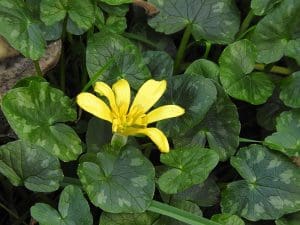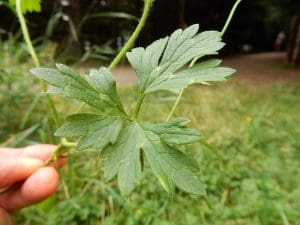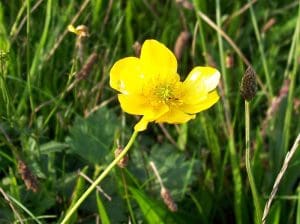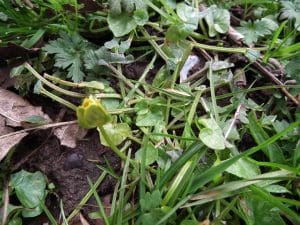Lesser Celandine / Spring /Leaves and flowers are edible when cooked
Lesser Celandine is one of those plants you’ll see almost everywhere in spring, carpeting woodland floors with vibrant flowers.
Scientific name
Ranunculus ficaria or Ficaria verna
Family
Ranunculacea (Buttercup)
Habitat
Habitat: Hedge banks, roadsides, river and stream banks and other areas that are seasonally flooded; deciduous woodlands, meadows and shady waste ground. They often grow where there is not a great deal of other vegetation.
Distribution:
UP to 750m. Native found pretty much throughout the British Isles except, in much of Lewis, parts of the Grampian Mountains and much of the North West Highlands in Scotland and Mayo some areas of central southern Ireland.
Physical Characteristics for Lesser Celandine
A perennial herb up to 20cm with stems creeping and rooting, then ascending.
Leaves
The leaves are long-stalked, cordate, fleshy, blunt, hairless, glossy green, 1-4cm long and wide, in rosettes. The leaves are patterned with markings darker or lighter than the main leaf colour.

Rob Mitchell, CC0, via Wikimedia Commons
Flowers
Flowers are 2-3cm across, solitary and long-stalked, comprised of 3 oval sepals and 7-12 narrow oval petals which are 1 – 1.5cm long and glossy yellow
Uses
A late winter and spring hot wild salad or green vegetable – before it flowers.
Leaves look attractive in hot salads and add a mild flavour. In stir fry recipes the stems retain their succulent texture when cooked.
The plant’s roots swell up to form bulbs or tubers, which are reputedly delicious and can be eaten as a starchy vegetable. Lesser celandine has been used as a potherb in central Europe and the young parts of the plant have been added to salads.
The Lesser Celandine ( Ranunculus Ficaria) is also known as the Pile-wort, a name given to it in reference to the small tubers on the roots, which, following the doctrine of plant signatures, indicated that the plant was a remedial agent for haemorrhoids.
Known Hazards
Leaves contain protoanemonin, but in minute quantities. Levels are said to increase as the plant comes into flower. Even so, the are most commonly advised to be eaten in moderation and cooked. Protoanemonin is destroyed by heat so all parts of the plant should be cooked before eating.
As a member of the buttercup family, lesser celandine may cause contact dermatitis in humans and animals.
The plant sap may also cause nausea and vomiting if taken internally; the plant’s safety during pregnancy or when breastfeeding is not established and therefore best avoided.
Many buttercup-family members are poisonous, including Britain’s most poisonous plant: Monk’s Hood, Aconitum napellus contains aconitine, a drug of ancient usage that slows the heart and relieves pain but can also kill. Stinking Hellebore, Helleborus foetidus and Green Hellebore, Helleborus veridis, are also highly toxic. None of these three look similar to Lesser Celandine.
Potential lookalikes
There are several species of buttercup with glossy, yellow petals but most have broader petals. Lesser celandine has narrower petals than other yellow buttercups but care should be taken as individual flowers can develop different growth forms.
The leaves of other buttercups are more lobed and divided than Lesser Celandine see, for example, the Creeping Buttercup, Meadow Buttercup and Bulbous buttercup

Matt Lavin from Bozeman, Montana, USA, CC BY-SA 2.0 <https://creativecommons.org/licenses/by-sa/2.0>, via Wikimedia Commons

AnemoneProjectors, CC BY-SA 2.0 <https://creativecommons.org/licenses/by-sa/2.0>, via Wikimedia Commons
Ecology
As one of the first flowers to appear after winter, they provide an important nectar source for queen bumblebees and other pollinators emerging from hibernation, and other early insects.
References
http://www.wildflowersofireland.net/plant_detail.php?id_flower=59







Leave a Reply
You must be logged in to post a comment.